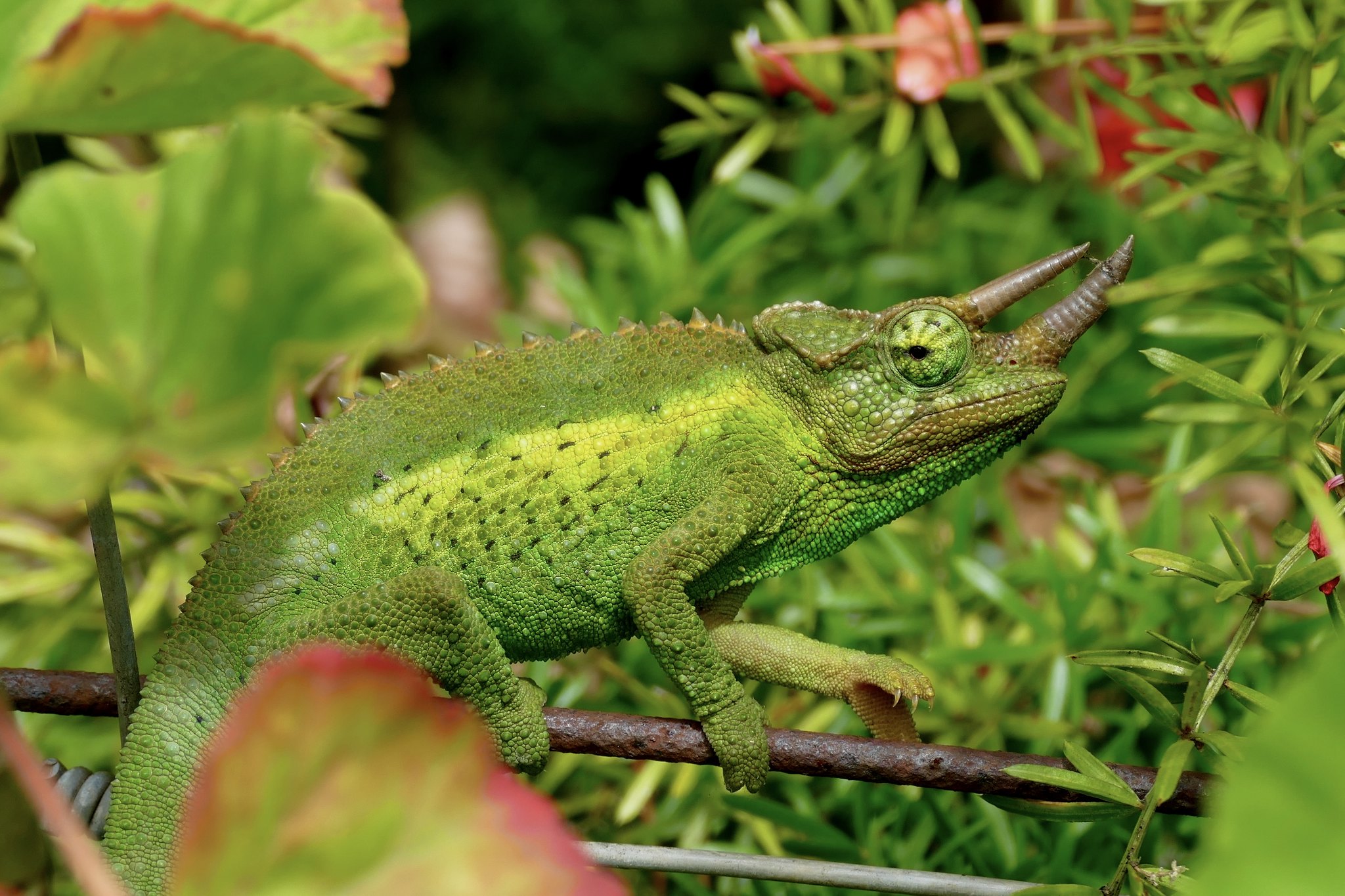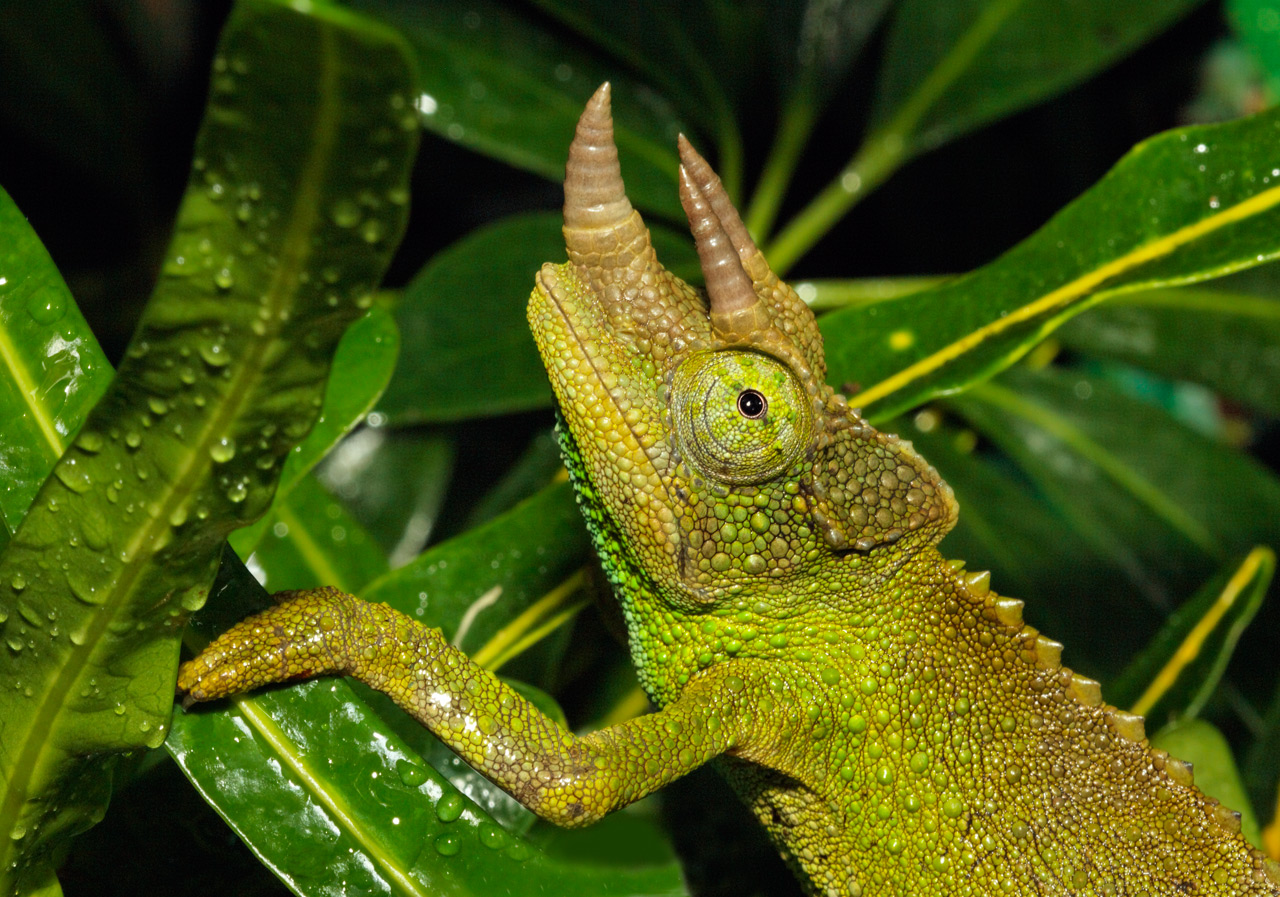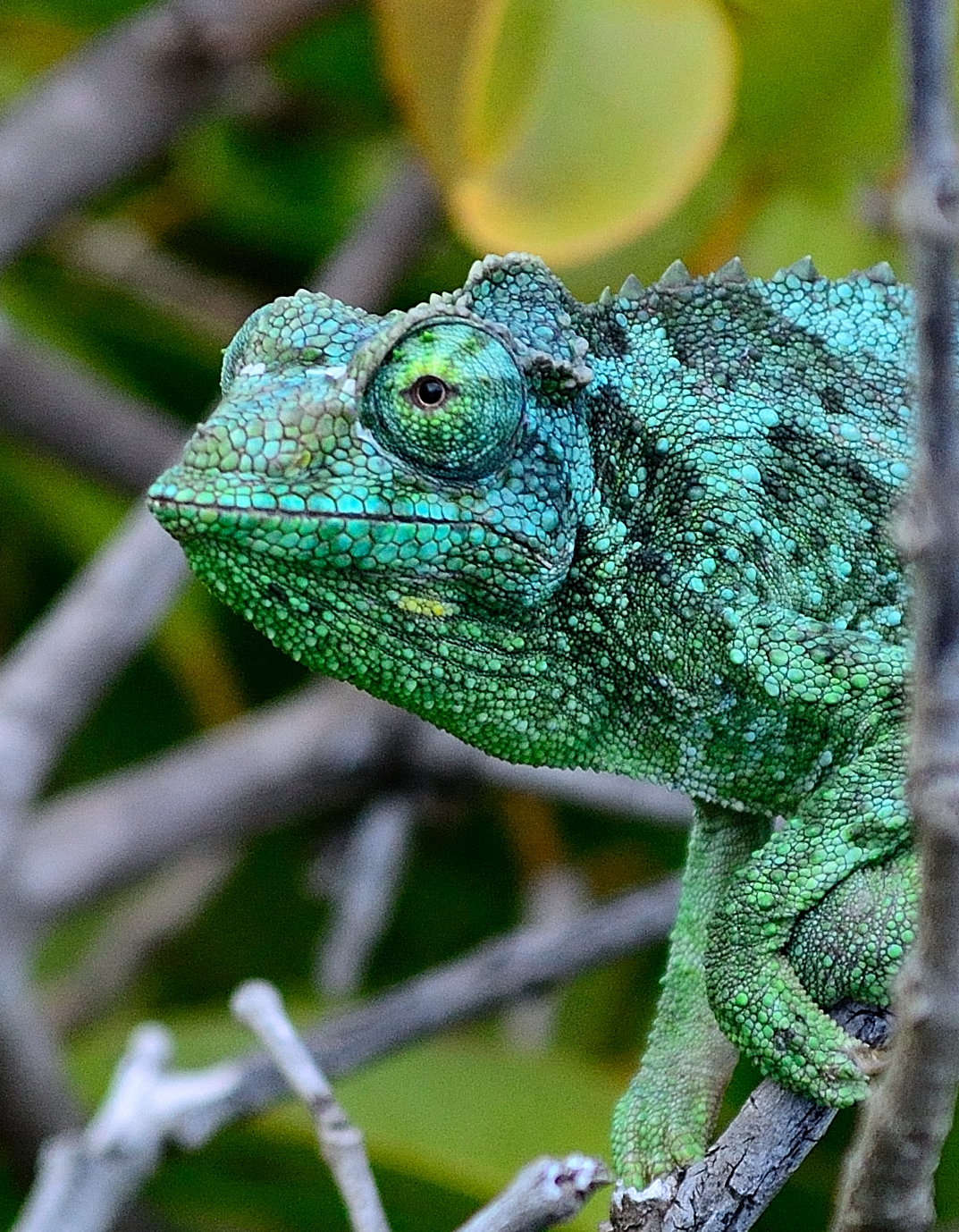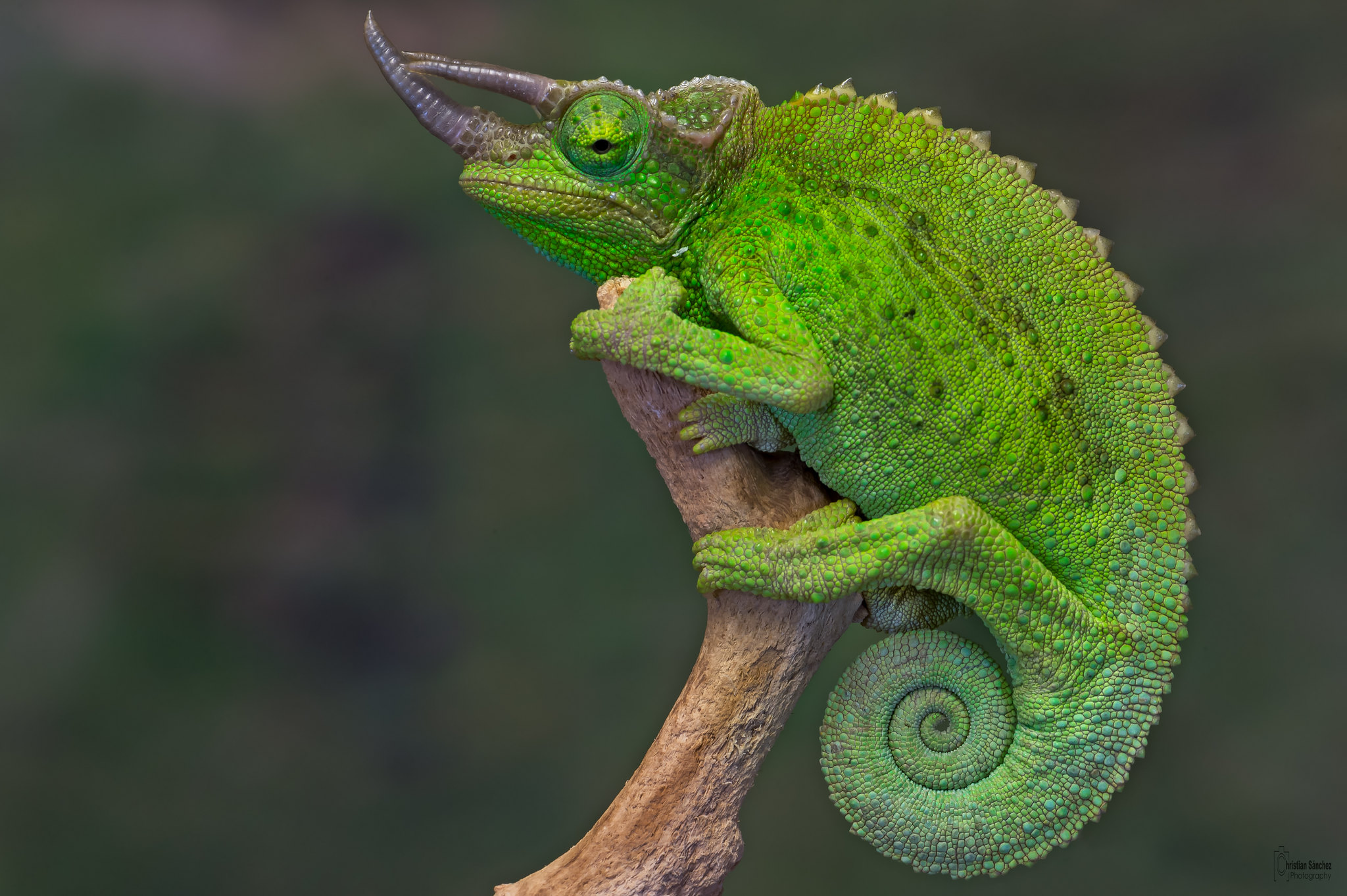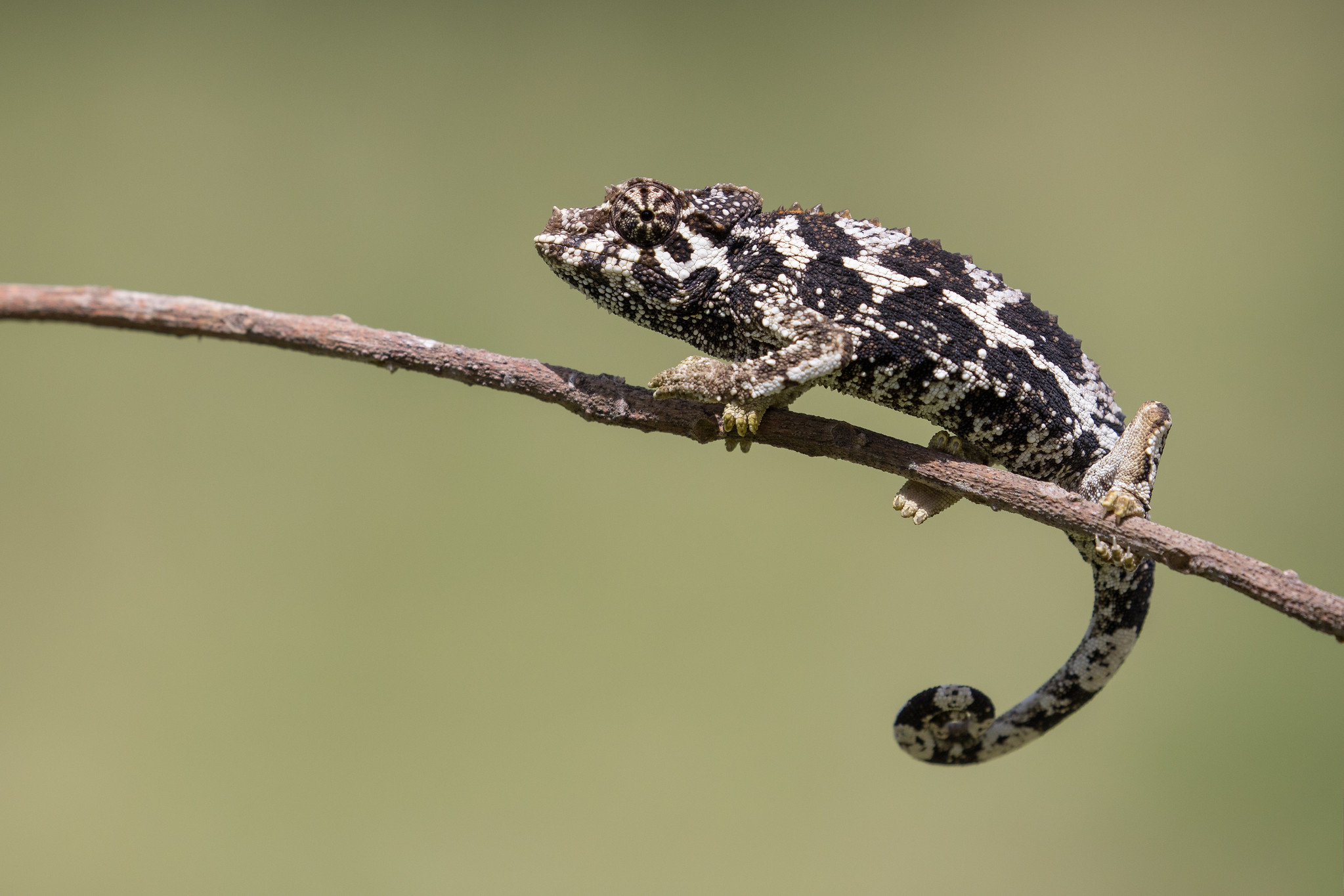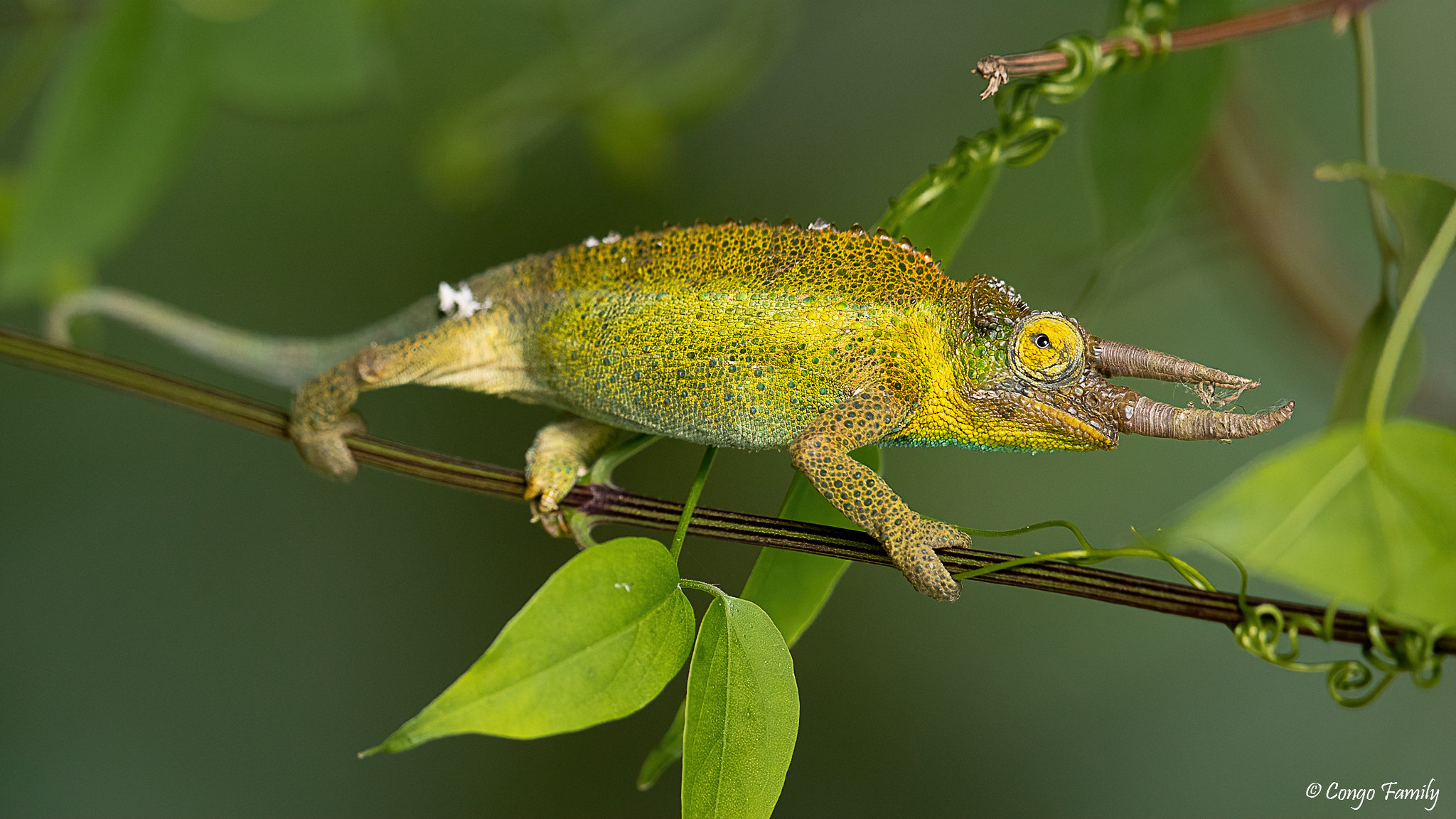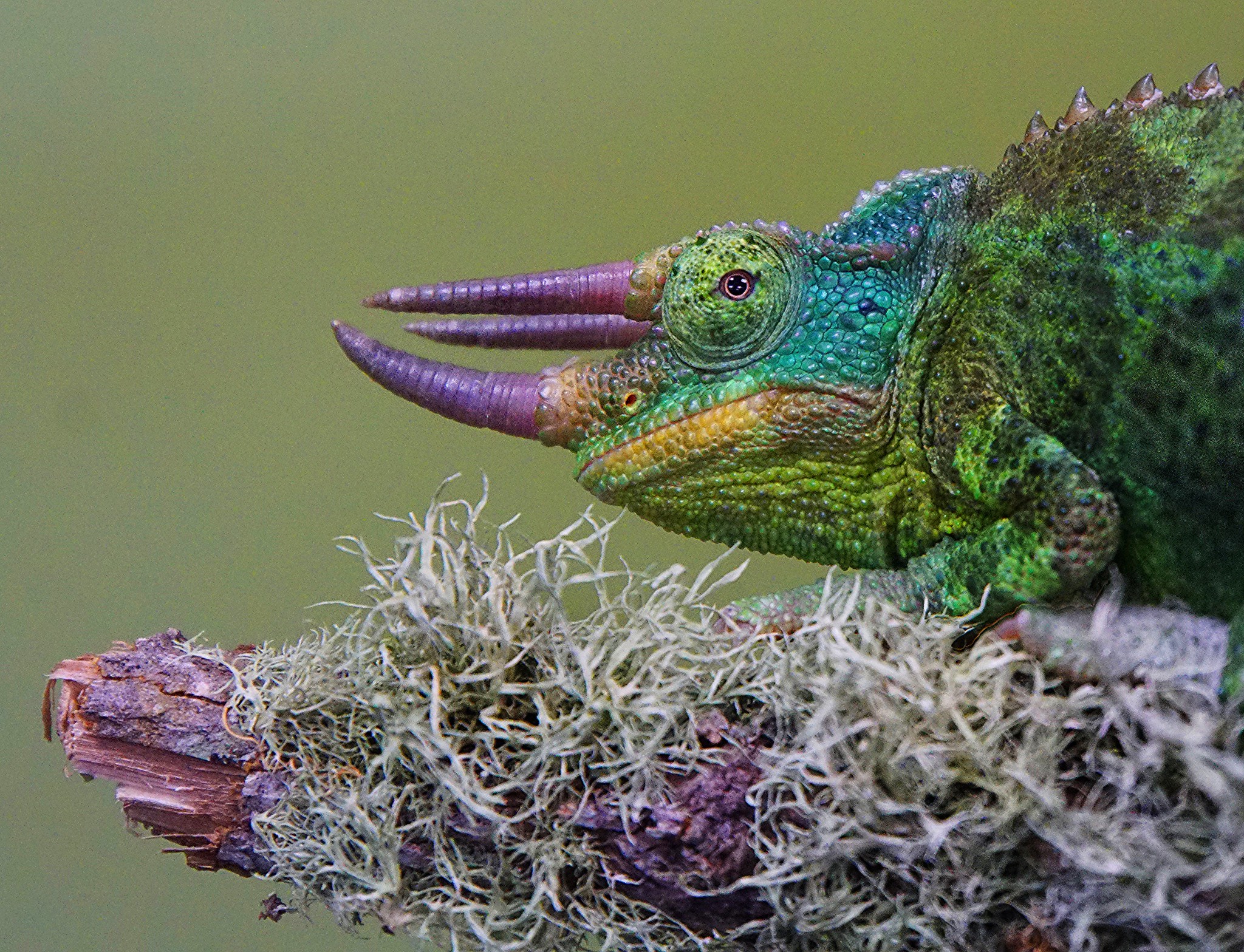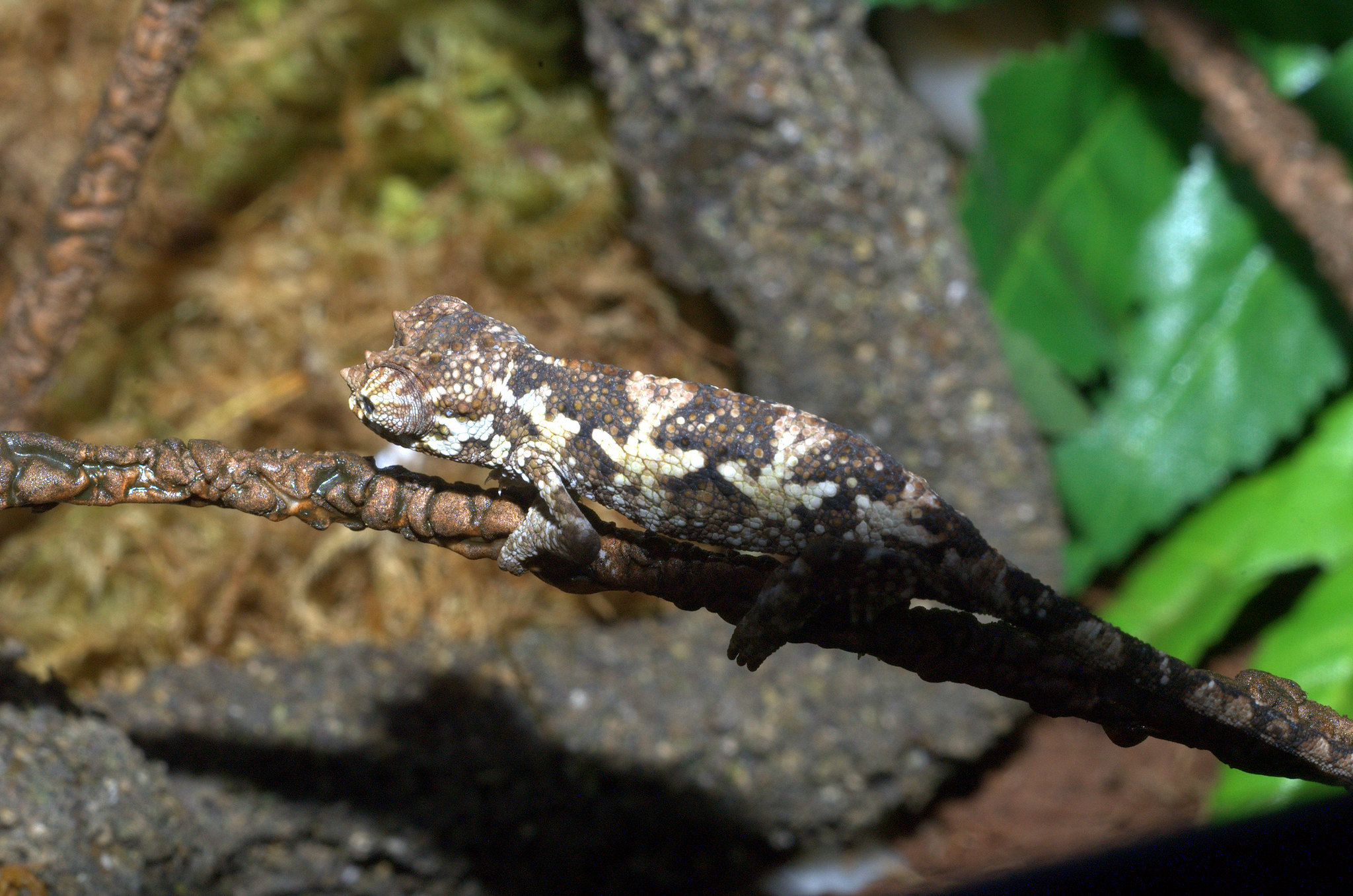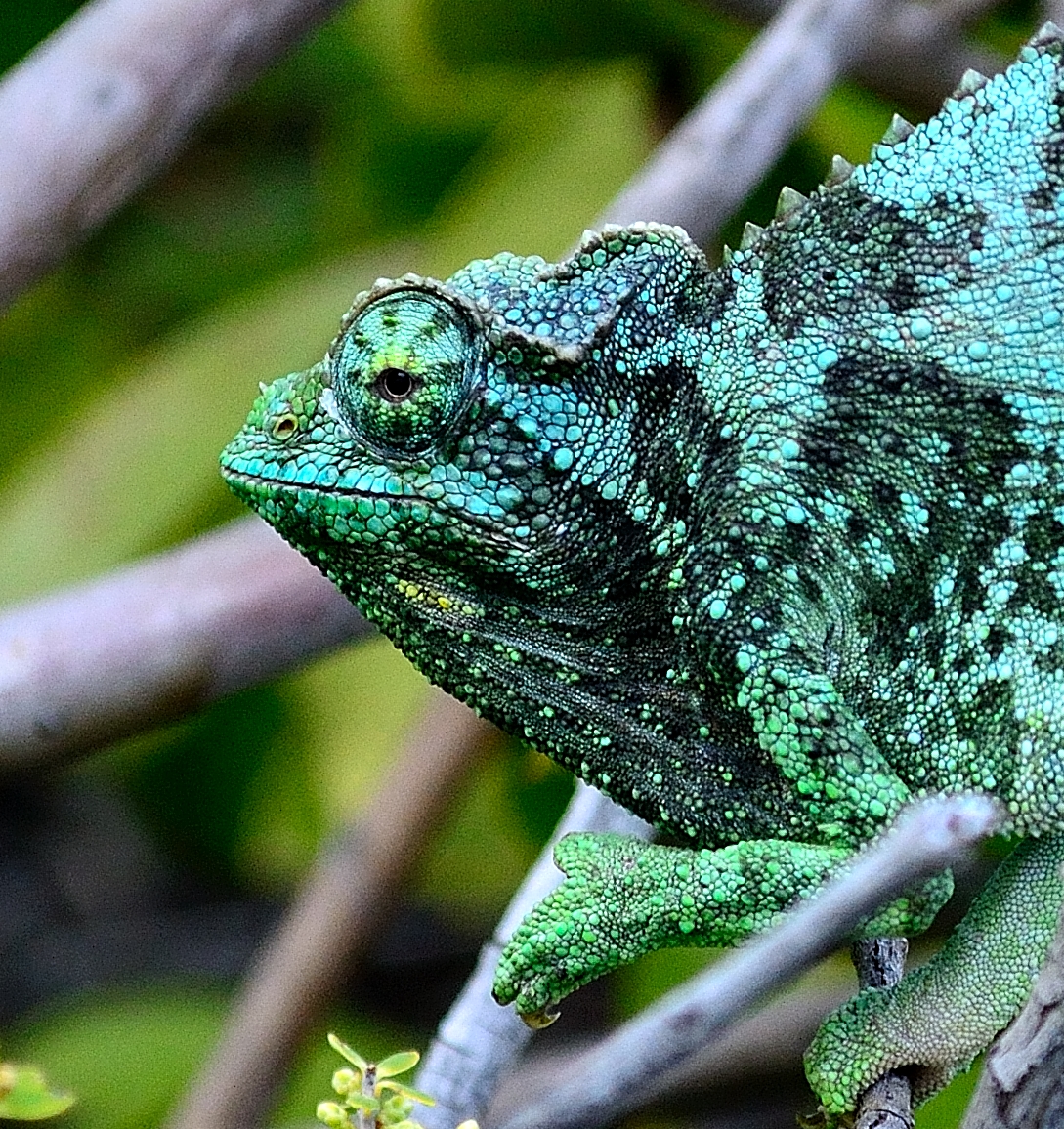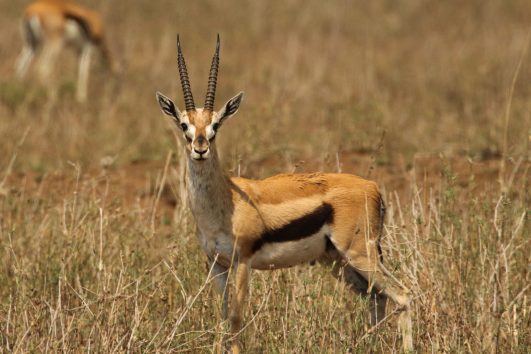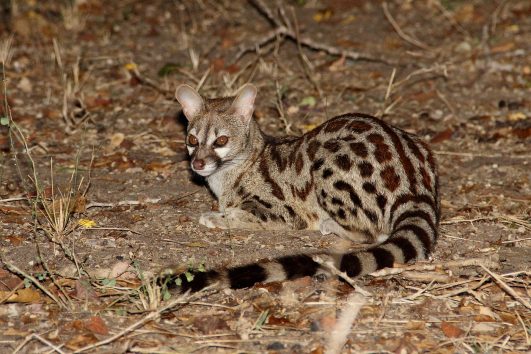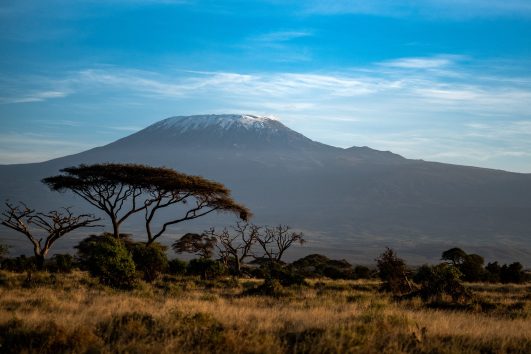Jackson’s Chameleon, named after Frederick John Jackson, a British explorer and administrator in East Africa, is one of the most recognized chameleons due to its unique physical features, particularly the three horns on males’ heads. Native to East Africa especially the mountainous regions like Mount Kilimanjaro, Mount Meru and Mount Kenya, this species has also been introduced to other parts of the world, including Hawaii and Florida, where it has become somewhat of an invasive species.
Also known as Chamäleon, Jackson’s horned chameleon, three-horned chameleon, or Kikuyu three-horned chameleon, this species has three recognized subspecies.
Discovery and Naming:
- Scientific Description: Belgian-British zoologist George Albert Boulenger first described Jackson’s Chameleon in 1896.
- Genus Name: The genus Trioceros comes from the Greek words “tri-” meaning “three” and “keras” meaning “horns,” reflecting the three horns on the males’ heads.
- Species Name: Named after Frederick John Jackson, an English explorer and ornithologist, who was the first Governor of Kenya during Boulenger’s time.
Etymology of “Chameleon”: The term “chameleon” comes from the Latin chamaeleō, which was borrowed from Ancient Greek khamailéōn, combining khamaí (“on the ground”) and léōn (“lion”), essentially translating to “ground lion,” a term originally from Akkadian nēš qaqqari.
Physical Appearance:
- Size: Males can grow up to 33 cm (13 inches) in length, while females are generally smaller, around 20 cm (8 inches).
- Horns: The most distinctive feature is the trio of horns on the male’s head, resembling a triceratops. Females either lack horns or have very small ones.
- Coloration: They are known for their ability to change color, ranging from bright greens to darker browns, often with patterns or stripes. This color change is used for communication, thermoregulation, and camouflage.
- Body: They have a laterally compressed body, a prehensile tail, and zygodactylous feet (two toes pointing forward and two backward), which aid in climbing.
Adaptations:
- Camouflage: Their color-changing ability helps them blend into their environment, avoiding predators and sneaking up on prey.
- Eyes: Their eyes can move independently, allowing them to look in two different directions simultaneously, which is crucial for spotting both predators and prey.
- Tongue: They have a long, sticky tongue that can be projected rapidly to catch insects from a distance, sometimes up to twice their body length.
- Prehensile Tail: This tail acts like an extra limb, helping them grip branches securely.
- Zygodactylous Feet: These specialized feet allow for a firm grip on branches, essential for their arboreal lifestyle.
Habitat:
- Native Range: Originally from Kenya and Tanzania, particularly in montane forests and bamboo thickets at elevations of 1,200 to 2,000 meters above sea level.
- Habitat Characteristics: They prefer dense vegetation where they can move from branch to branch with ease. Their habitat provides ample cover, moisture, and a variety of insects for feeding.
- Introduced Habitats: In places like Hawaii and Florida, they’ve adapted to similar environments, often found in gardens, parks, and forested areas where there’s enough vegetation for climbing and hiding.
Behavior and Lifestyle:
- Solitary: Jackson’s Chameleons are generally solitary, except during mating.
- Territorial: Males are territorial and will defend their space against other males.
- Reproduction: Females lay eggs in the soil, which hatch after a few months, depending on environmental conditions.
Conservation and Impact: While not currently threatened in their native range, their introduction to new ecosystems can have ecological impacts, potentially affecting local insect populations and competing with native species for resources. In Hawaii, for instance, they are considered an invasive species due to their impact on native invertebrates.
Contact us to book your Chamäleon Kilimanjaro expedition and safari in Tanzania.
Additional information
| Habitat | Kilimanjaro National Park, Mount Meru, Mount Kenya, Rwenzori |
|---|

